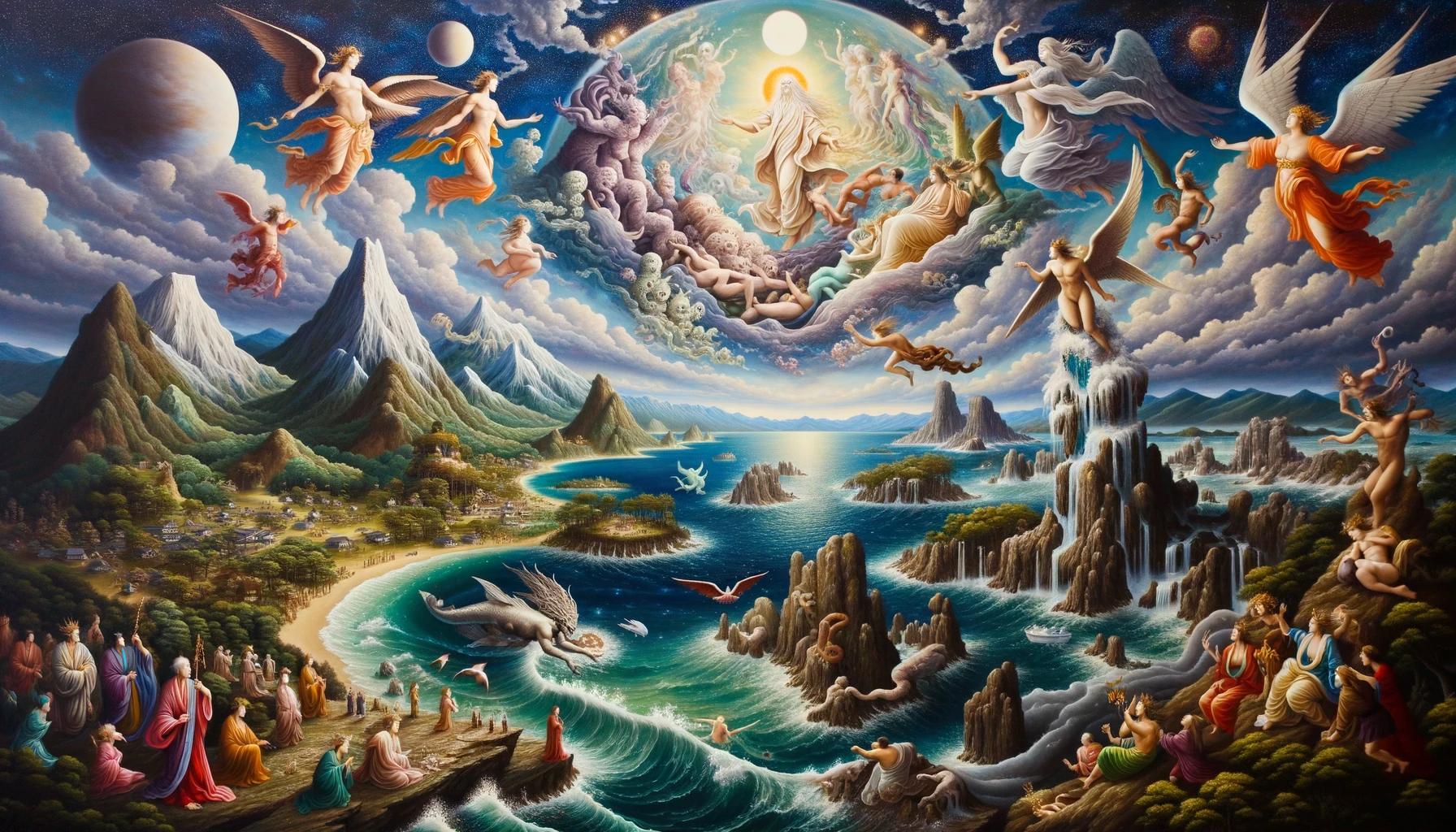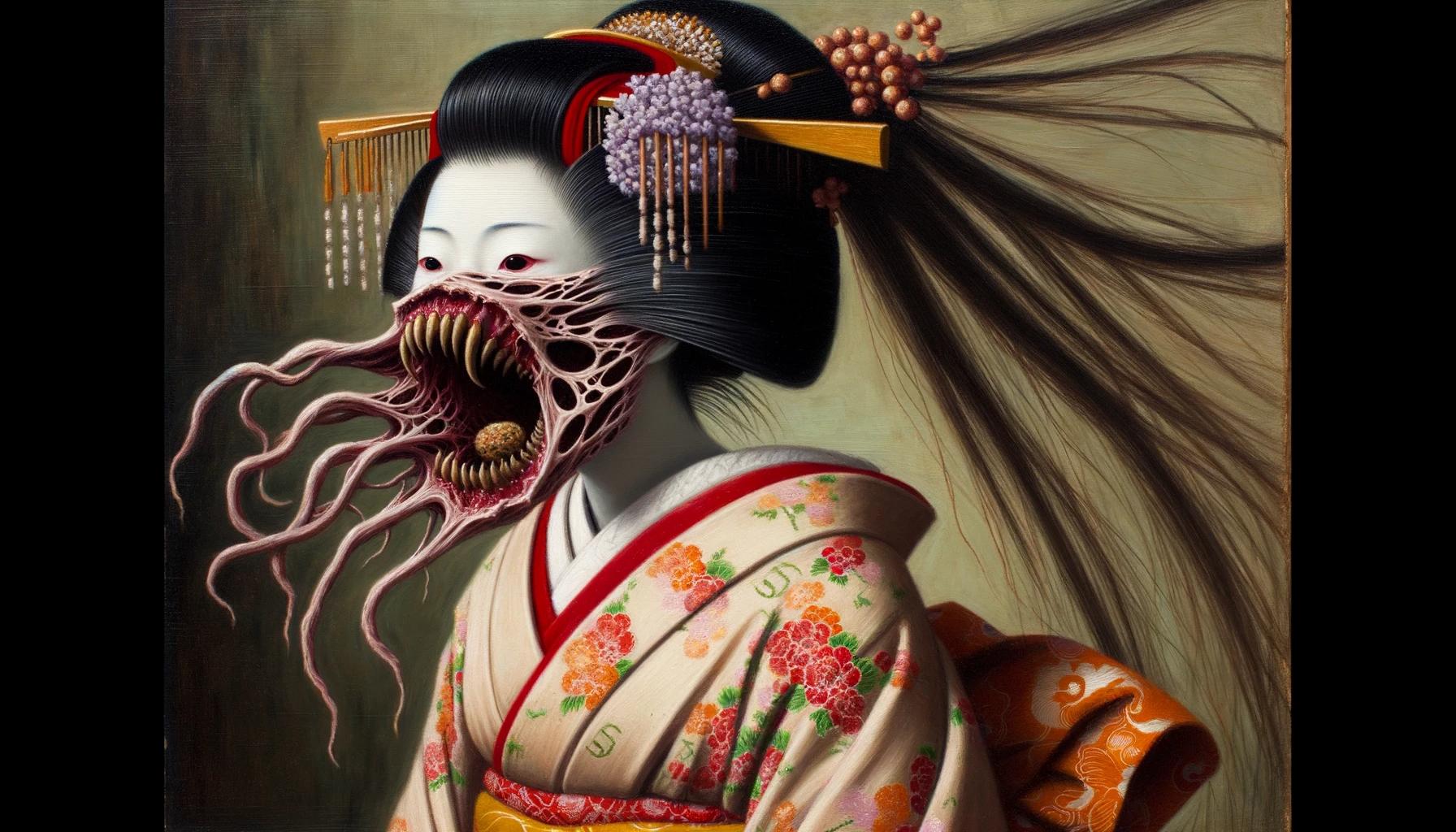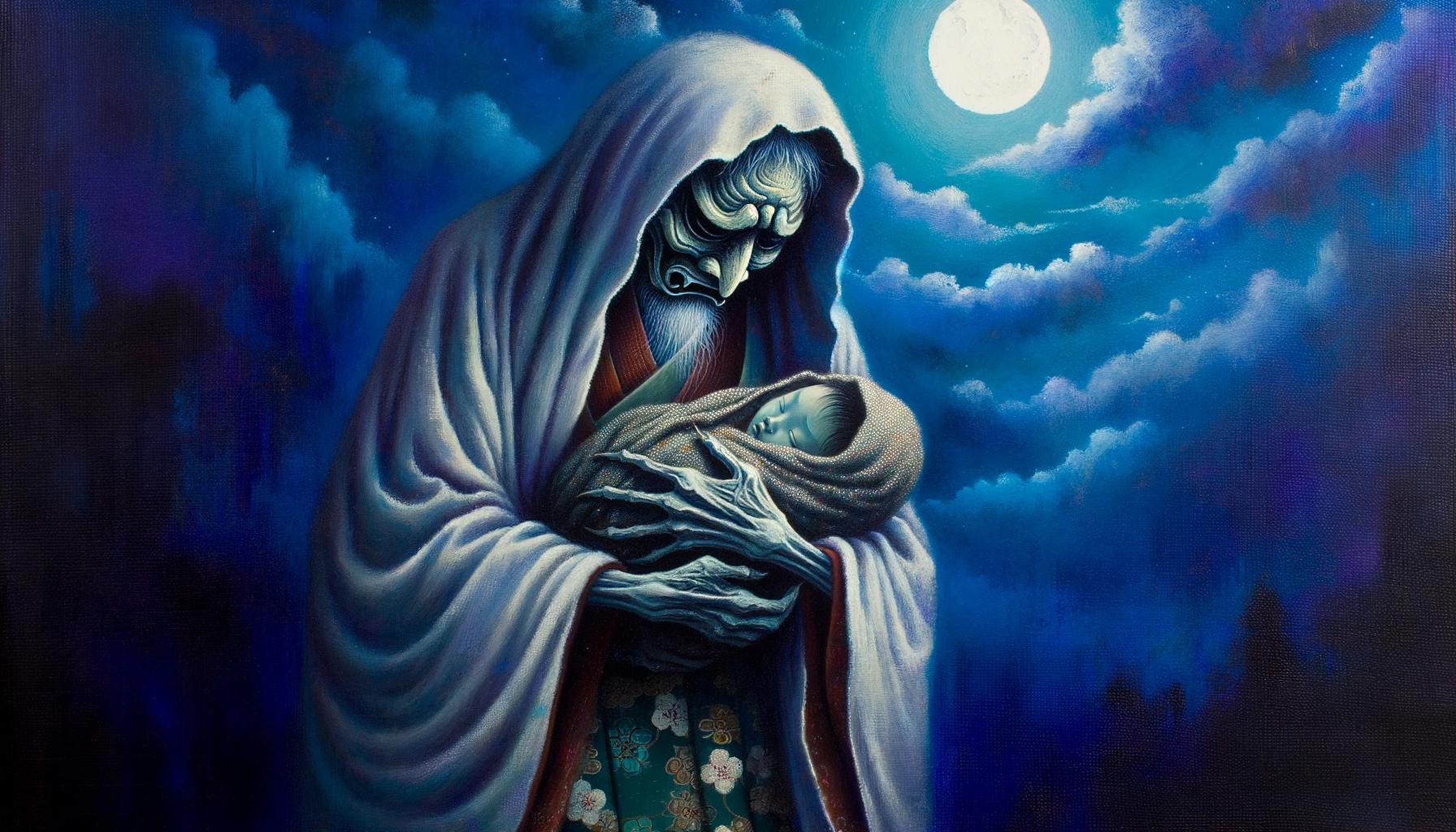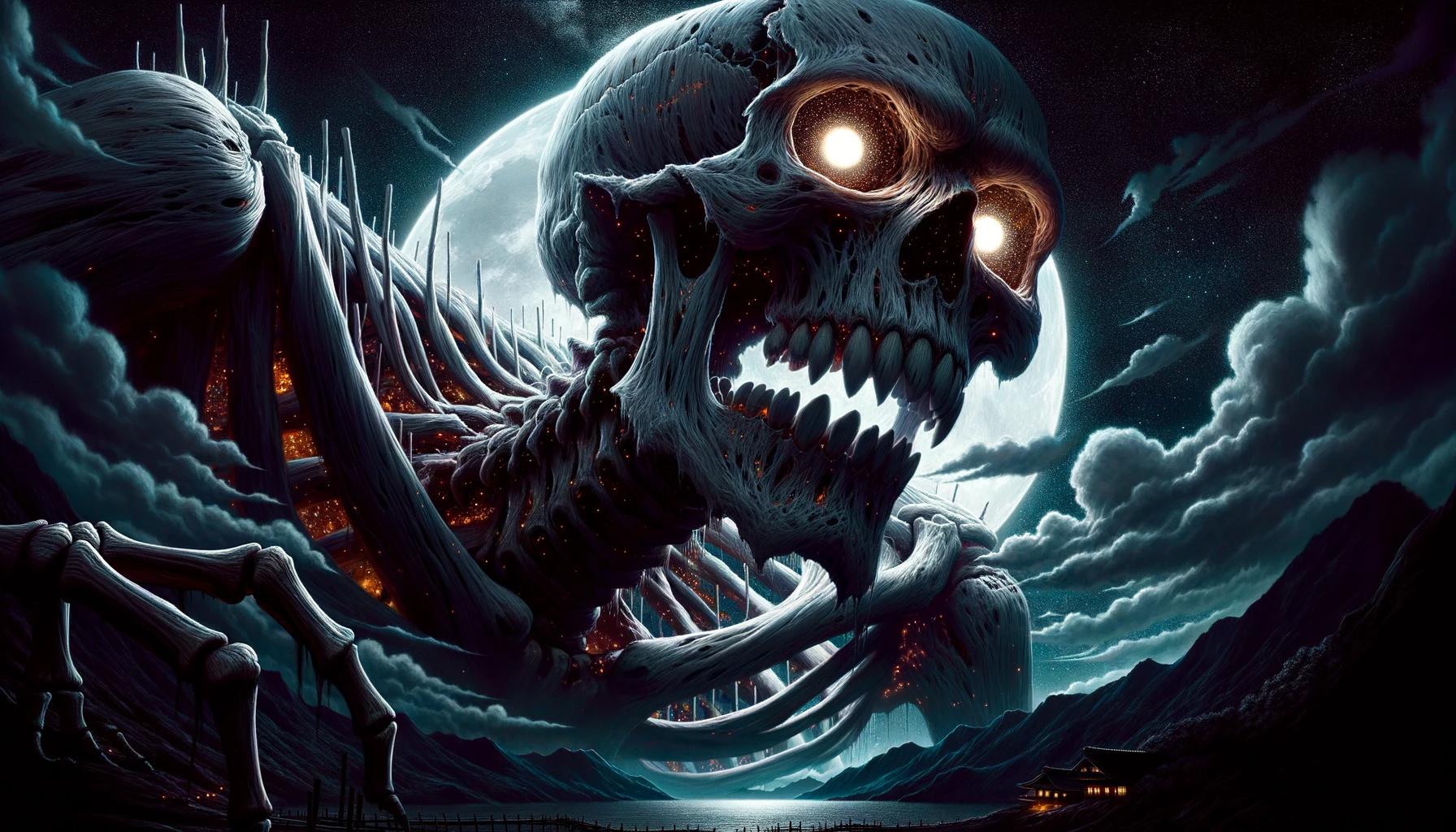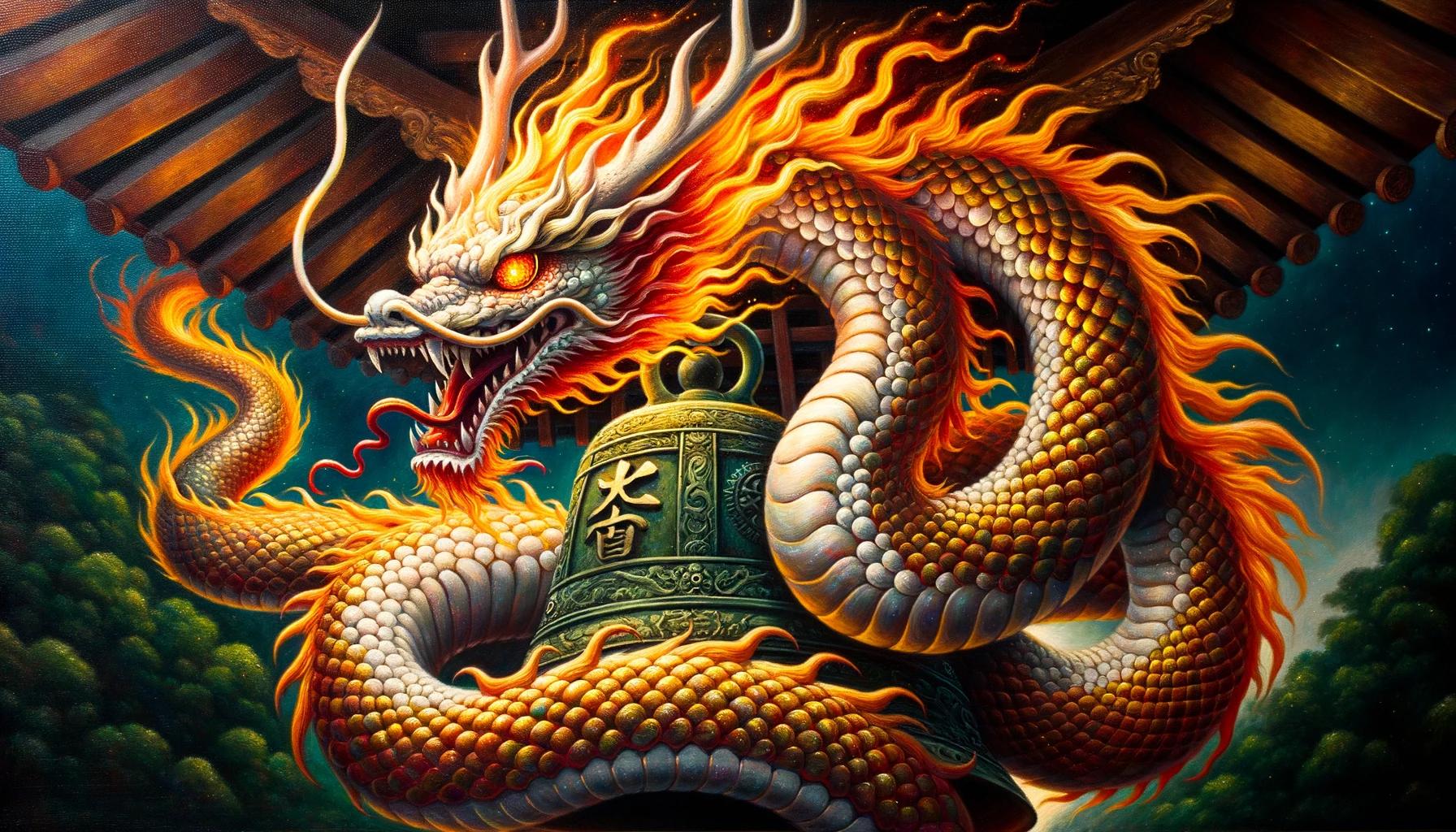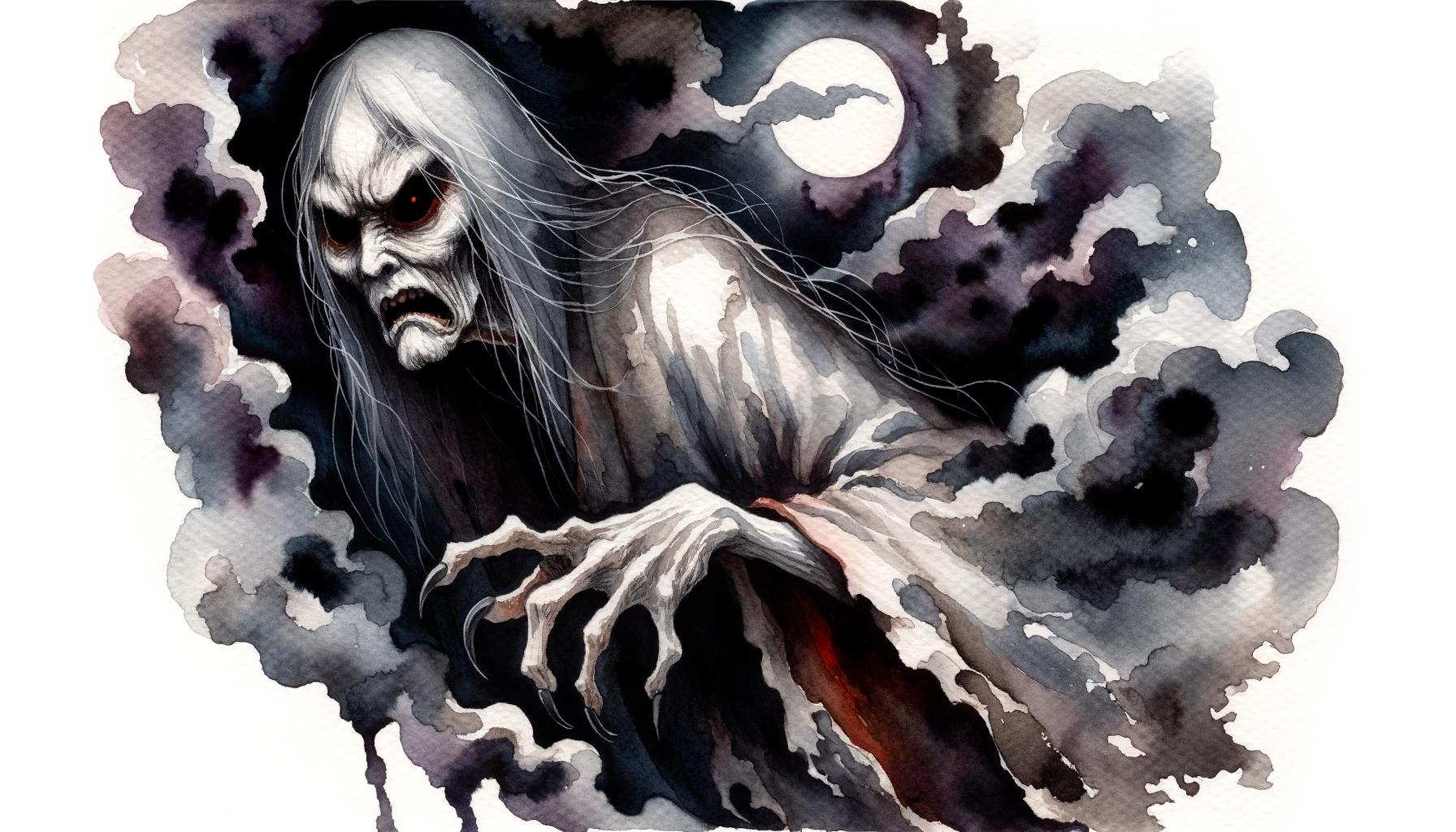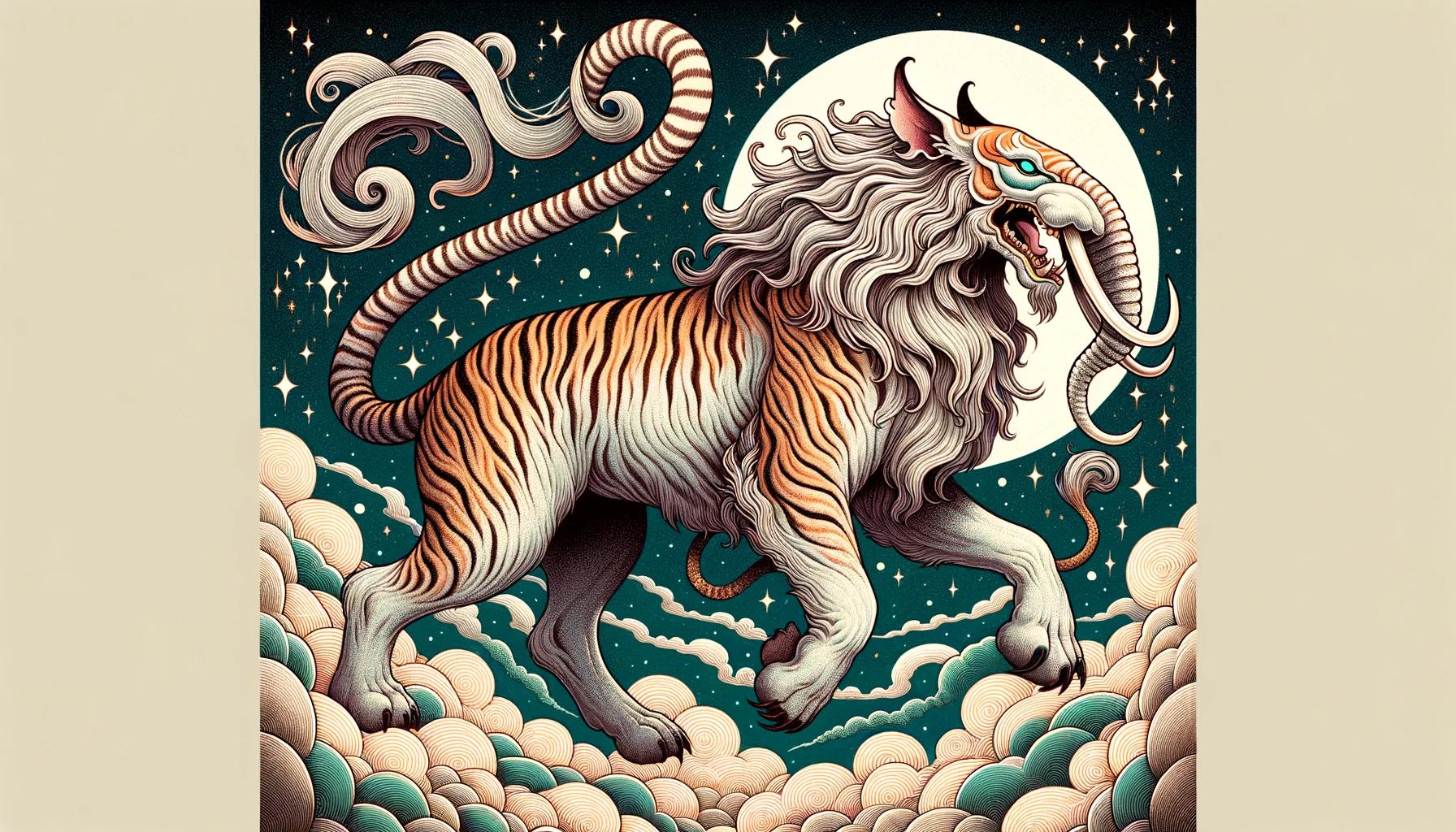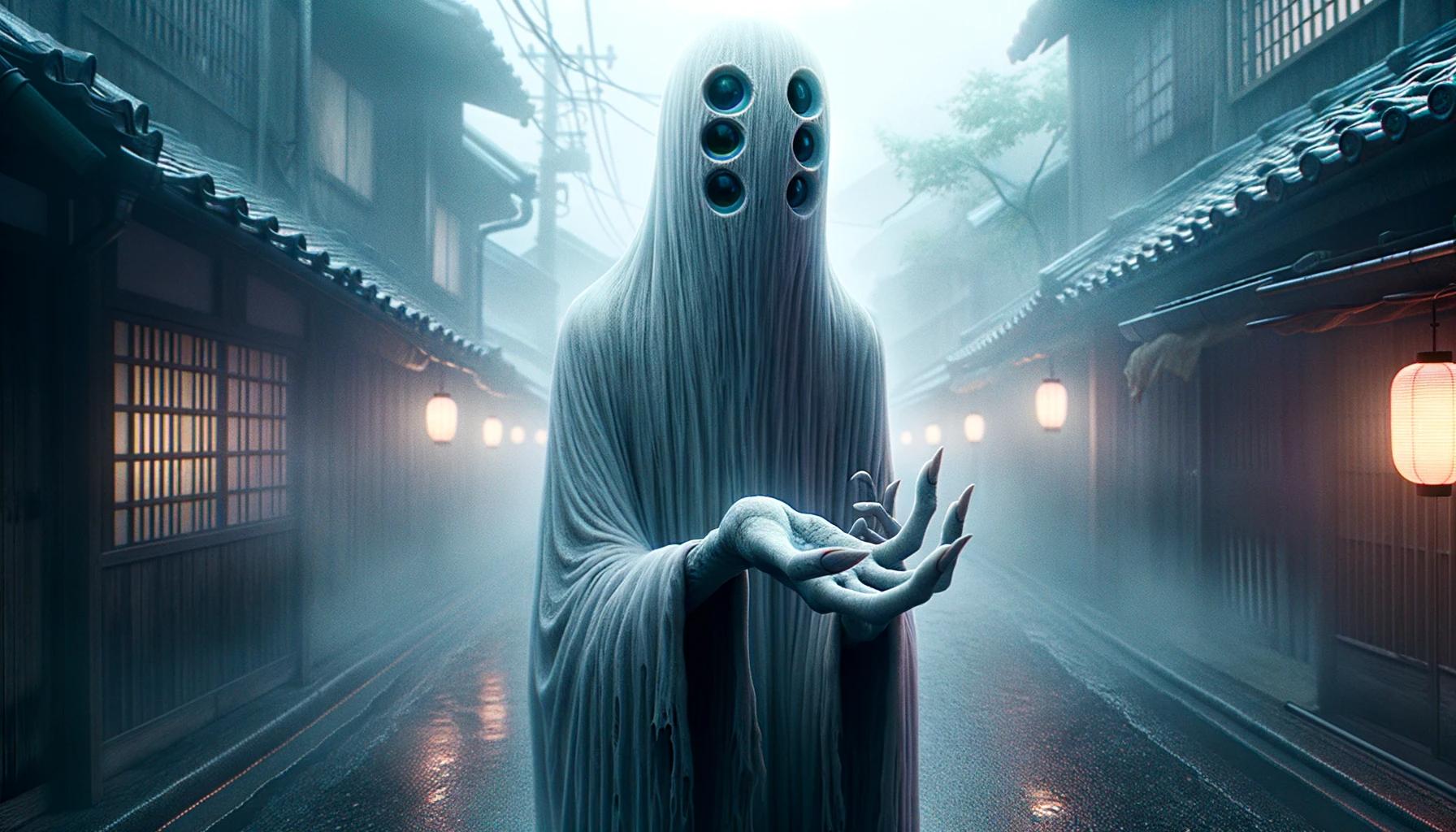What is Yomi in Japanese Mythology: Unveiling the Secrets of the Underworld
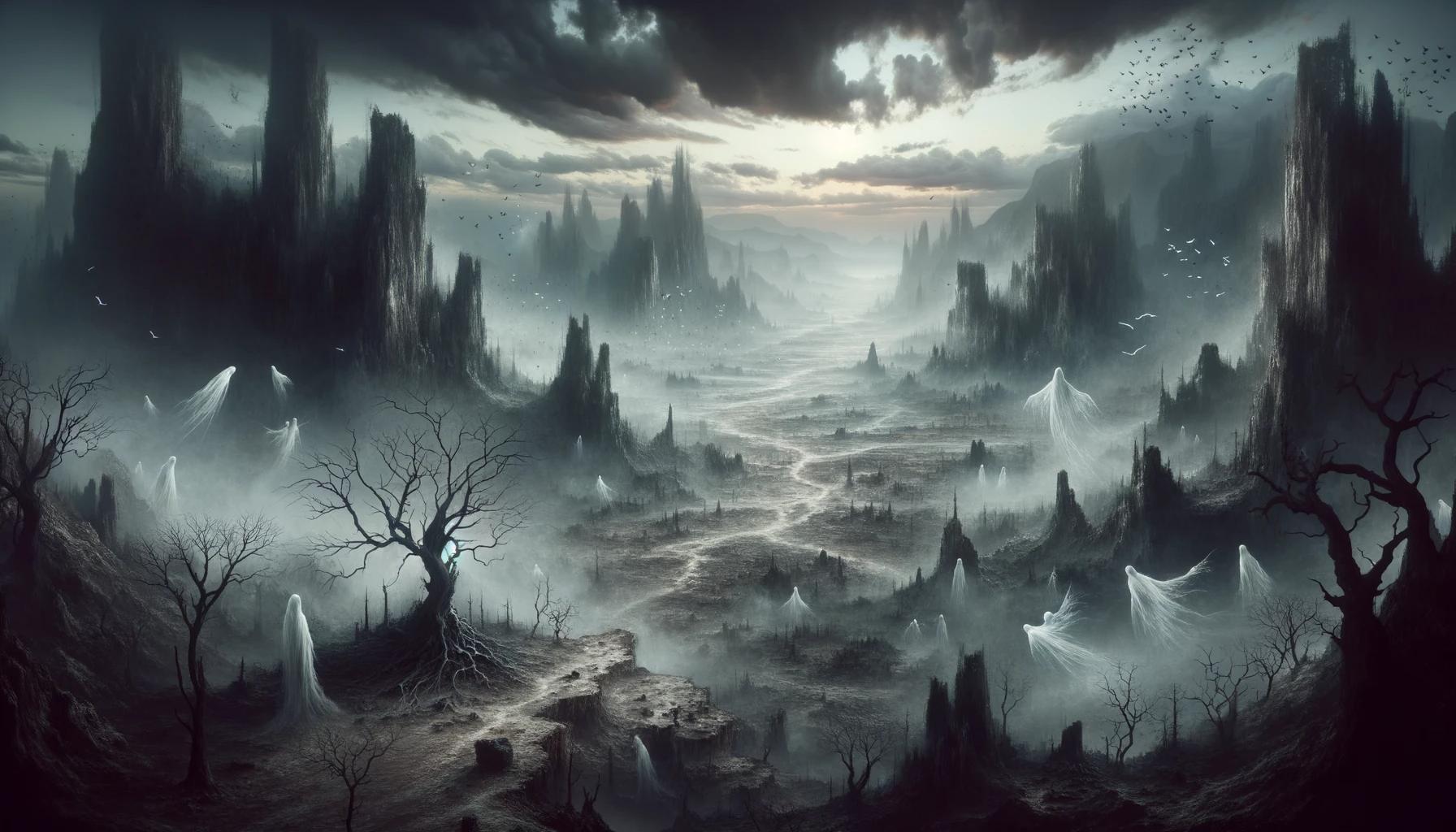
Yomi in Japanese mythology refers to the underworld, believed to be the destination for souls of the deceased. While not a part of Shinto theology, it is mentioned in ancient myths documented in the 8th-century Kojiki.
Described as a place beneath the earth, souls gather in Yomi. It is believed to have two entrances: a simple opening in Izumo, blocked by a rock, and a more dramatic entrance where all the seas pour onto land.
This article explores the origins, significance, and cultural impact of Yomi in Japanese mythology along with its connections to the creators of Japan, Izanami and Izanagi.
Understanding the Shinto Religion and its Mythological Elements
Shinto is a native religion of Japan, deeply rooted in its culture and history.
It encompasses a complex belief system that includes various mythological elements. To understand the significance of Yomi in Japanese mythology, it is essential to explore the fundamental principles of the Shinto religion.
Shinto revolves around the veneration of kami, the divine spirits or deities believed to exist in every aspect of nature, including natural phenomena, plants, animals, and even ancestors. The Japanese people believe that these kami play a vital role in shaping the world and influencing human lives.
Central to the Shinto religion is the concept of harmony with nature and the understanding that humans are an integral part of the natural world. Shinto rituals and practices aim to maintain balance and foster a harmonious relationship between humans, kami, and the physical environment.
Mythology holds a significant place within Shinto, as it provides the foundation for understanding the origins of Japan and the existence of kami. These myths, passed down through ancient texts like the Kojiki and Nihon Shoki, shed light on the creation of the world, the birth of gods and goddesses, and the interplay between different realms.
By delving into the Shinto religion and its mythological elements, we can gain a deeper understanding of Yomi’s role within Japanese mythology and its connection to the broader cosmology.
Exploring Yomi: The Land of the Dead
Yomi is a fascinating realm in Japanese mythology that serves as the land of the dead.
Let’s delve into its origins, significance, and the dark and mysterious nature it embodies.
The Origin of Yomi in Japanese Mythology
In Japanese mythology, the concept of Yomi as the underworld emerged from ancient beliefs and cultural narratives. It is not a part of Shinto theology but is mentioned in various ancient texts and legends, such as the Kojiki, a significant eighth-century text.
Yomi in the Kojiki: Ancient Texts and Legends
The Kojiki provides valuable insights into Yomi and its role in Japanese mythology. It recounts the story of Izanami, the goddess of creation, and her descent into Yomi after her tragic death.
Through this myth, Yomi gains symbolic significance as the final destination for souls after death.
Describing the Dark and Mysterious Nature of Yomi
Yomi is described as a place situated beneath the Earth, where the souls of the deceased gather. It embodies an eerie and somber atmosphere, shrouded in darkness and mystery. Yomi’s obscurity and enigmatic nature evoke a sense of intrigue and fascination among scholars and enthusiasts of Japanese mythology.
Izanami and Izanagi: The Creators of Japan and their Connection to Yomi
Izanami and Izanagi are the legendary deities responsible for the creation of Japan. Their story is intertwined with the realm of Yomi, the land of the dead in Japanese mythology.
Let’s delve into the tragic tale of Izanami’s death, Izanagi’s journey to Yomi to retrieve her, and the significant consequences that followed.
The Tragic Story of Izanami’s Death and Descent into Yomi
In Japanese mythology, Izanami, the goddess of creation and death, suffered a tragic fate.
After giving birth to Kagutsuchi, the deity of fire, Izanami was severely burned and eventually succumbed to her injuries. This marked her descent into Yomi, the underworld, as she became one with the realm of the dead.
Izanagi’s Journey to Yomi to Retrieve Izanami
Devastated by the loss of his beloved wife, Izanagi embarked on a daring quest to bring Izanami back from Yomi. He ventured into the gloomy depths of the underworld to reunite with her.
However, as he reached Yomi and saw Izanami’s decaying form, he was filled with horror and fled, breaking the promise he made to her to not look back.
The Consequences of Izanagi’s Actions: Birth of Amaterasu, Susanoo, and Tsukuyomi
As Izanagi escaped Yomi, darkness befell the world.
His actions in Yomi led to the birth of three significant deities: Amaterasu, the goddess of the sun and ruler of the heavens; Susanoo, the god of storms and the sea; and Tsukuyomi, the god of the moon.
These deities played crucial roles in shaping the world and its natural forces.
In conclusion, the story of Izanami and Izanagi showcases their deep connection to Yomi, the realm of the dead.
Izanami’s tragic death and Izanagi’s ill-fated journey into the underworld influence not only their story but also the creation and mythology of Japan. The consequences of Izanagi’s actions reverberate throughout Japanese culture and continue to shape the rich tapestry of Japanese mythology.
Yomi as the Underworld Realm: its Geography and Entrances
In Japanese mythology, Yomi is depicted as the realm of the dead, located beneath the earth’s surface. This section explores the structure, geography, and entrances to Yomi, revealing its intriguing characteristics and lore.
Describing the Structure and Geography of Yomi
Yomi is described as a vast and mysterious underworld in Japanese mythology. It is often depicted as a dark and gloomy realm, contrasting with the vibrant world of the living.
As per ancient beliefs, Yomi is thought to have a complex structure, with various levels and regions that denote different aspects of the afterlife.
According to mythology, Yomi is known to be filled with treacherous landscapes, including rocky terrains and winding paths.
Rivers and pools of stagnant water are said to flow through its depths, enhancing the eerie ambiance of this realm.
The Entrance to Yomi: The Mysterious Opening in Izumo
One of the entrances to Yomi is believed to be a simple opening located in the region of Izumo. However, this pathway is said to be blocked by a large rock, preventing easy access to the realm of the dead.
This enigmatic entrance adds to the mystique surrounding Yomi, further emphasizing its separation from the world of the living.
The Spectacular Entrance to Yomi where the Seas Fall to Earth
Another entrance to Yomi is described as a dramatic phenomenon where all the seas of the world converge and fall towards the earth.
This awe-inspiring entrance showcases the magnitude and significance of Yomi in Japanese mythology.
Legends describe how the roaring waters of the seas cascade down, symbolizing the transition from the realm of the living to the realm of the dead.
This grand entrance signifies the profound separation between life and death, leaving an indelible impression on those who dare to witness it.
Yomi’s Significance in Japanese Mythology and Culture
In Japanese mythology, Yomi holds great significance in understanding the cycle of life and death. This realm of the dead represents the final destination for souls after their earthly journey.
Let us explore the role of Yomi in Japanese mythology and its impact on cultural beliefs and practices.
Understanding the Role of Yomi in the Cycle of Life and Death
Yomi serves as the destination for the departed souls, where they reside eternally.
It symbolizes the culmination of life and the transition to the afterlife. According to Shinto beliefs, the souls in Yomi continue to exist and influence the living world, acting as intermediaries between gods and humans.
Yomi’s significance lies in its representation of the eternal cycle of life and death. It emphasizes the transient nature of human existence and serves as a reminder to cherish and appreciate life.
The concept of Yomi reinforces the idea that death is not an end but a continuation of the larger cosmic cycle.
Yomi in Modern Japanese Beliefs and Practices
Even in modern times, Yomi’s influence can be seen in various aspects of Japanese culture. Its depiction in art, literature, and religious practices demonstrates its enduring significance.
In Japanese funerary customs, Yomi’s influence can be observed.
Traditional rituals and practices surrounding death often reflect the belief in Yomi as the final resting place of the deceased. These customs help facilitate the journey of the departed souls to Yomi and ensure their peaceful transition.
Furthermore, Yomi continues to inspire artists, writers, and creators. Its dark and mysterious nature provides fertile ground for storytelling in various forms of media. From literature to films and video games, Yomi’s portrayal captivates audiences worldwide, adding depth and intrigue to Japanese cultural productions.
Overall, Yomi’s significance in Japanese mythology and culture extends beyond its role as the realm of the dead. It symbolizes the interconnectedness of life and death, serving as a constant reminder of the ephemeral nature of existence.
The Impact and Influence of Yomi on Japanese Literature, Art, and Entertainment
The underworld realm of Yomi has left a profound impact on various aspects of Japanese culture, particularly in literature, art, and entertainment. From ancient texts to contemporary works, Yomi’s presence is vividly depicted, showcasing its significance in Japanese mythology.
Yomi Depictions in Japanese Literature: From the Kojiki to Contemporary Works
The Kojiki, a renowned ancient text, contains vivid descriptions of Yomi and its surroundings. It served as a foundation for subsequent literary works that explored the theme of the underworld. Prominent Japanese authors throughout history, such as Natsume Soseki and Junichiro Tanizaki, have woven Yomi into their narratives, often symbolizing the mysteries of life, death, and the human condition.
Contemporary Japanese writers continue to draw inspiration from Yomi, incorporating its themes into their compositions. By delving into the depths of the underworld, these authors add layers of complexity and introspection to their stories, creating a rich tapestry of Japanese literature.
Yomi’s Presence in Japanese Visual Arts: Paintings, Prints, and Sculptures
Japanese visual arts have been deeply influenced by Yomi, with numerous artworks showcasing its eerie, dark atmosphere. Paintings, prints, and sculptures often depict scenes from Yomi, beautifully capturing its otherworldly aspects.
Artists like Hokusai and Yoshitoshi, renowned for their mastery of ukiyo-e woodblock prints, have created stunning visual representations of Yomi, mesmerizing viewers with their intricate details and atmospheric ambiance.
Furthermore, contemporary artists continue to explore Yomi as a subject, incorporating it into various mediums, from traditional paintings to digital art installations.
These works serve as a testament to the enduring allure of Yomi in Japanese visual culture.
Yomi in Japanese Pop Culture: Anime, Manga, and Video Games
The impact of Yomi extends beyond traditional forms of art and permeates modern Japanese pop culture. Anime, manga, and video games often feature Yomi as a thematic element, highlighting its mysterious and enigmatic nature.
Popular franchises such as “Bleach” and “Persona” delve into the depths of Yomi, intertwining its mythology with captivating storylines and captivating character development.
Yomi’s influence can also be seen in the realm of video games, where it serves as a backdrop for epic adventures and quests.
Players are transported to the underworld, encountering creatures and challenges inspired by Japanese mythology and Yomi itself.
Through its presence in various forms of entertainment media, Yomi continues to captivate audiences and inspire new generations to explore the depths of Japanese mythology.
Exploring Further: Resources and References about Yomi in Japanese Mythology
If you want to delve deeper into Yomi and its significance in Japanese mythology, there are several resources and references that can provide you with valuable information.
Here are some recommended sources to expand your knowledge on this fascinating topic:
- The Kojiki: This ancient text, dating back to the 8th century, contains the earliest known myths and legends of Japan, including detailed accounts of Yomi and its role in the cycle of life and death.
- Shinto: The Kami Way: Written by Sokyo Ono, this book offers a comprehensive introduction to Shinto, the religious context in which Yomi is mentioned.
It explores the beliefs, rituals, and mythology surrounding Shintoism, providing valuable insights into Yomi as part of this complex belief system.
- Japanese Mythology: A Captivating Guide to Japanese Folklore, Myths, Fairy Tales, Yokai, Heroes, and Shinto: This captivating guide by Matt Clayton provides an in-depth exploration of Japanese mythology, including Yomi and its connections to Izanami, Izanagi, and other prominent figures in Japanese folklore.
- Yomi: Discovering the Underworld in Japanese Mythology: Authored by Ralph Jock, this book focuses specifically on Yomi and its representation in Japanese mythological narratives throughout history.
It analyzes the various interpretations and descriptions of Yomi, shedding light on its cultural significance as both a physical and metaphysical realm.
Additionally, you may find academic journals, research papers, and online articles that discuss Yomi in the context of Japanese mythology.
These resources can provide valuable insights, interpretations, and discussions from scholars and experts in the field of Japanese folklore and mythology. Remember to critically evaluate the sources and cross-reference information to ensure accuracy and reliability.
.











